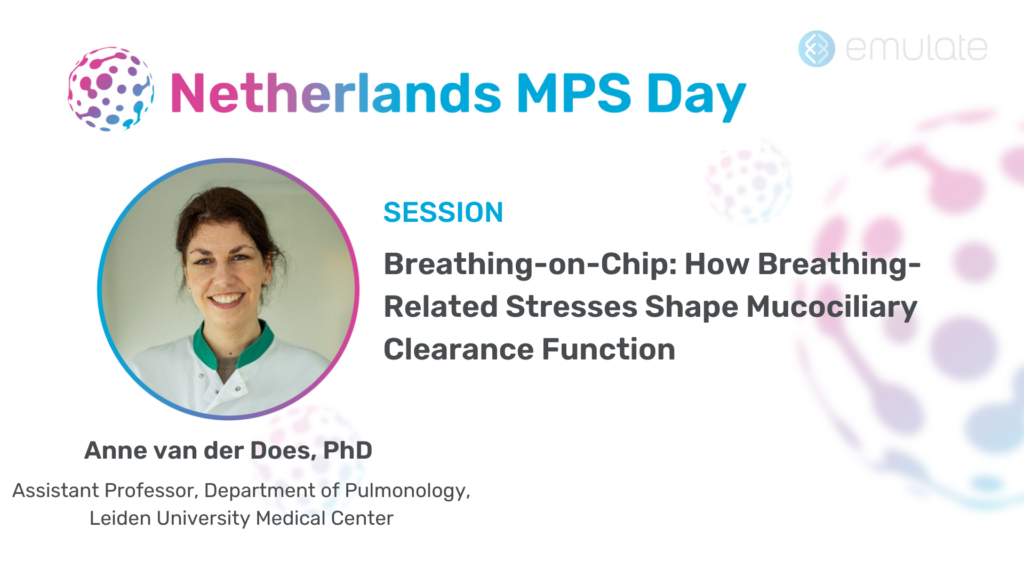Featured session at Netherlands MPS Day, which took place on 11/15/2023.
Dr. Anne van der Does from Leiden University Medical Center presents work on modeling both airway and alveolar regions of the human lung using advanced in vitro systems, including Organ-on-a-Chip technology. The lung, a complex and heterogeneous organ, is composed of distinct epithelial cell populations and is continuously subjected to mechanical forces such as airflow and stretching during breathing. These factors differ between the large airways, small airways, and alveoli, and they strongly influence cellular maturation, function, and repair.
Her team’s research demonstrates that incorporating mechanical cues (e.g., airflow and cyclic stretch) into an airway epithelial chip model accelerates mucociliary clearance and enhances the directional beating of cilia, achieving a more physiologically mature state within a shorter timeframe than conventional static cultures. Similarly, alveolar region models are being developed using primary alveolar type II cells expanded in organoids and induced pluripotent stem cell (iPSC)-derived alveolar-like cells. This approach enables large-scale, long-term studies and even genetic manipulation via CRISPR-based gene editing. The goal is to create improved disease models for conditions like chronic obstructive pulmonary disease (COPD) and pulmonary fibrosis, incorporating additional cell types (endothelial and stromal cells), mechanical factors, and environmental exposures (e.g., cigarette smoke). Ultimately, these refined, human-relevant models allow more accurate investigation into lung development, disease progression, and the efficacy of potential therapeutics.
Key learnings from this presentation include:
- Physiological relevance of mechanical cues: Integrating airflow and stretching significantly improves airway epithelial maturation, enhancing mucociliary clearance and cilia orientation within a shorter culture period compared to static conditions.
- Complex lung modeling: Distinct lung regions (airways vs. alveoli) require unique culturing strategies. Region-specific cell isolation, differentiation protocols, and careful choice of mechanical parameters are essential for robust, functional models.
- Biological insights into lung diseases: Improved in vitro models, including those derived from primary or iPSC-derived alveolar cells, facilitate the study of chronic lung diseases and repair mechanisms at the cellular and tissue level.
- Scalability and genetic manipulation: Expanding primary alveolar cells and using iPSCs allow for large-scale disease modeling and gene editing approaches, enabling systematic exploration of disease-relevant genetic variants and testing of therapeutic strategies.
- Towards multi-cellular, more complex systems: Incorporating additional lung cell types (such as endothelial cells and stromal cells) and modeling pathological conditions (fibrosis, alveolar damage) paves the way for more comprehensive and predictive human lung models.

